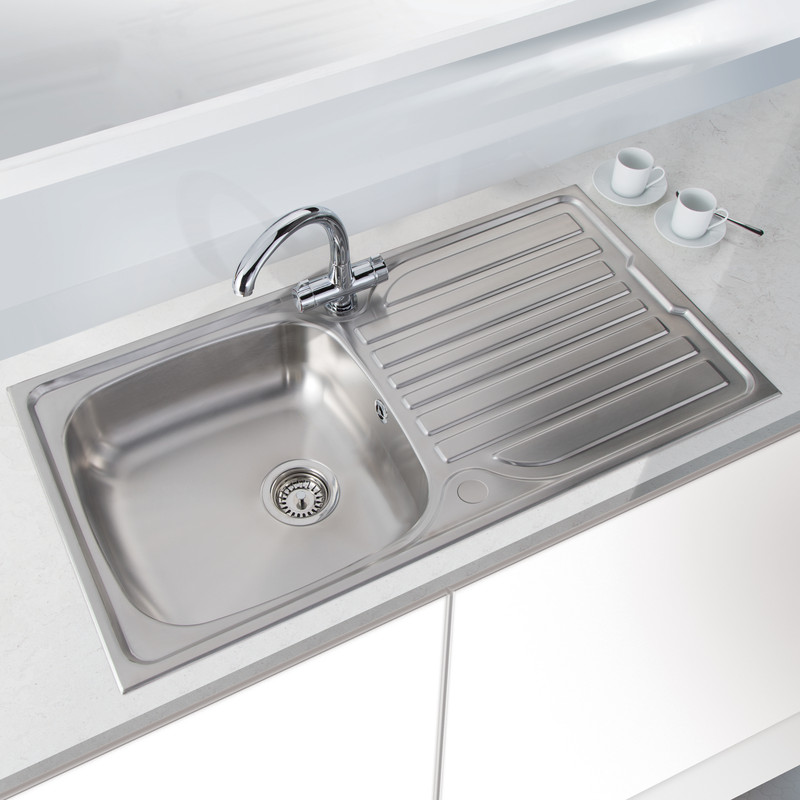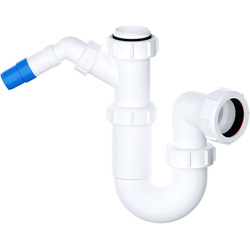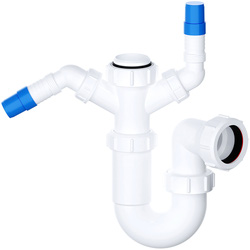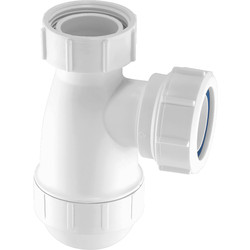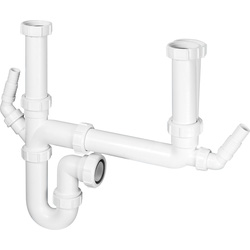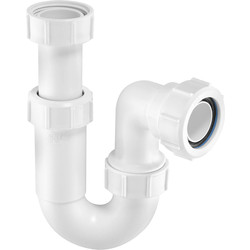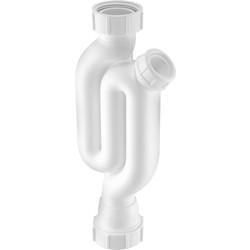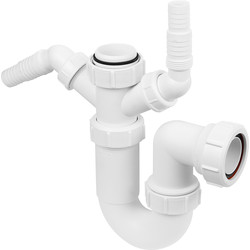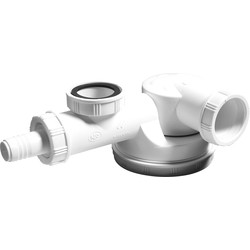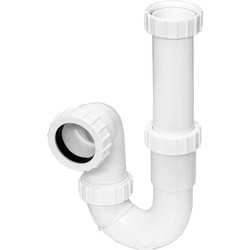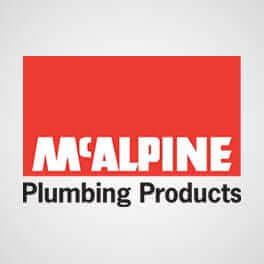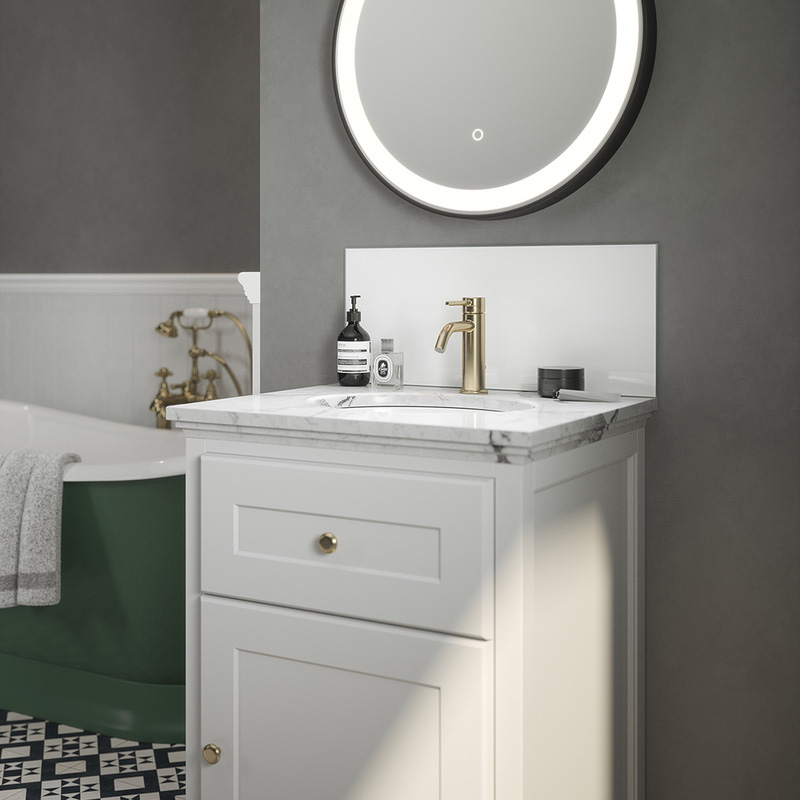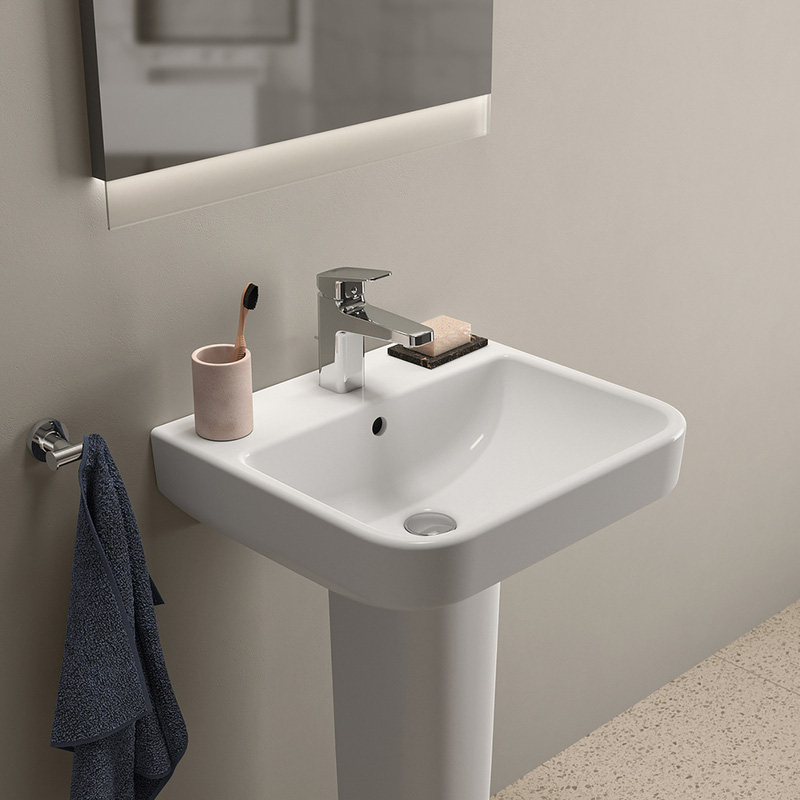It’s quite common not to pay too much attention to the underside of your bathroom or kitchen sink. The cupboards can sometimes be brimming with various cleaning products, and you may have missed an important piece of plumbing, and that is the sink trap!
While sink traps seem uninteresting, they actually play a really important role in your plumbing system by preventing waste gases and bad smells from escaping into the confines of your home.
A sink trap works by trapping a small amount of water within the trap. This water resides in the pipework and essentially acts as a seal.
If your current sink trap is leaking it may be due for an upgrade. In this guide we’ll be covering everything to do with sink traps, including the different types, commonly asked questions and things you’ll want to consider before buying a new one.
Types of Sink Traps
The most common sink traps typically include p-traps, s-traps, and bottle traps. While the primary function of all sink traps is the same, they each have slight differences in how they look and the sinks they’re best suited to.
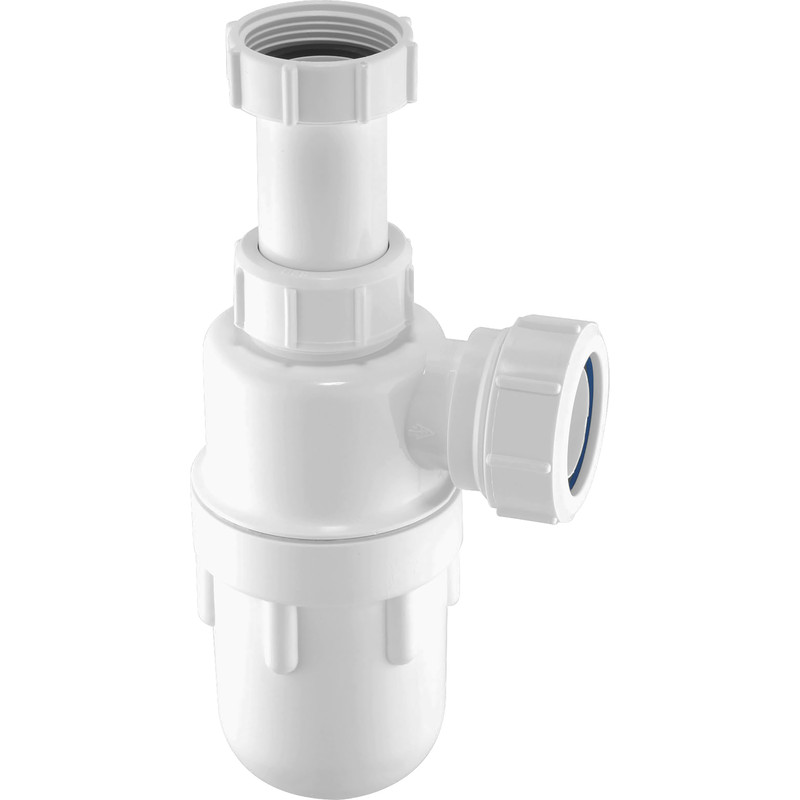
Bottle Trap
A bottle trap is recognisable by its cylindrical shape and vertical waste attachment. Compared to other sink trap types, they’re compact and take up much less space making them ideal for ensuite bathrooms and cloakrooms.
If your sink has exposed pipework, plastic traps can look a little unsightly. However, some bottle traps models are available in an attractive chrome-plated option which can add to the aesthetic appeal of your bathroom or toilet. Many bottle traps can be unscrewed from the bottom so you can retrieve lost items, like jewellery, or clear out any blockages.
Another advantage of bottle traps is that some feature adjustable inlets. These are sometimes referred to as telescopic sink traps and they make for quick and easy installation. While they can be great for family bathrooms, for sinks with little use they may not be the best option. That’s because the water seal can evaporate over time rendering them ineffective.
Advantages
-
Compact design
-
Available in plastic or chrome-plated
-
Easy to unblock and retrieve lost items
Things to Consider
-
May not be suitable for low-use sinks
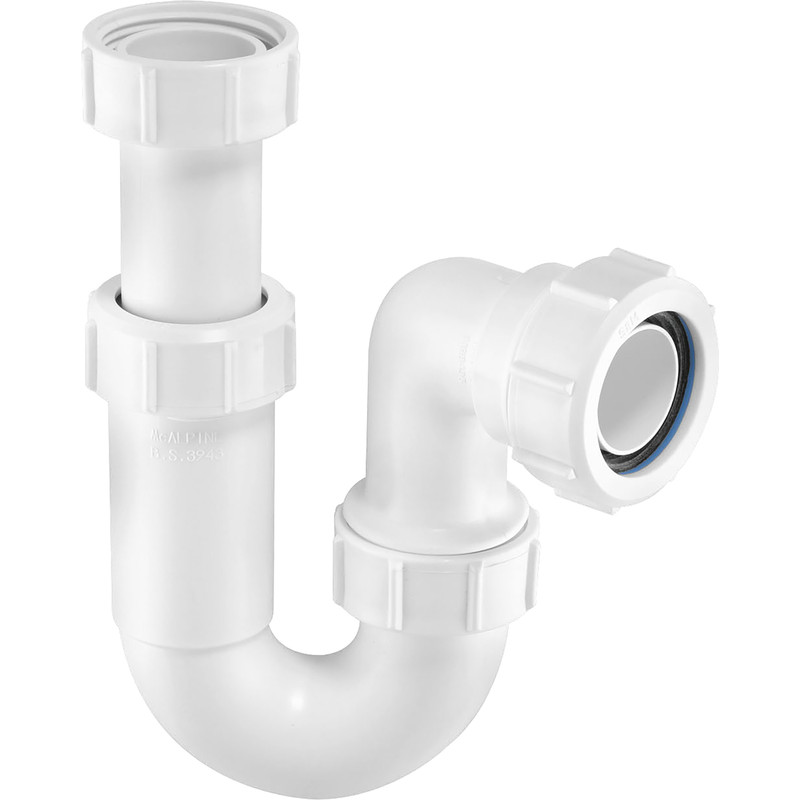
P Trap
The P Trap, also known as a u-bend, has a distinctive P-shape design, hence its name. It functions by way of an overflow pipe with a horizontal waste attachment. This allows the water to drain down the plughole, which then flows upwards and then drains water horizontally.
P traps are very popular options as they’re reliable and cost effective. The way they work is that the small bend in the pipe traps the water which creates a ‘plug’. As water drains through the trap, air is pulled from an external vent which helps to equalise the pressure. Compared to bottle traps, they tend to be easier to maintain as the lower section can be removed with ease to get rid of any food or soap residue that has built up over time.
While P traps are very reliable, the bend in the trap can sometimes be prone to blockages. Also, if the external vent itself becomes blocked, this could result in the water seal being sucked out with the draining water. A gurgling sound from within the pipes or nasty smells from the plughole can be an indication of a blocked vent.
Advantages
-
Available in a range of sizes for all sink types
-
Low maintenance
-
Easy to clean
Things to Consider
-
The bend in the trap can sometimes become blocked

S Trap
An S trap is quite similar to a P trap in the way it functions, but with the appearance resembling an ‘S’ shape when looking at it from side on. The significant difference between an S trap and P trap is their ability to maintain a constant water seal. This means that S traps are not often used.
If large amounts of water travel through an S trap there is the potential for it to create a continuous travel of water through the pipe which can pull the water out of the trap, this is known as water syphoning. This happens due to the water draining vertically as opposed to horizontally.
You’re more likely to come across S traps in older properties, or under sinks where other trap types cannot be used. In those instances, a vent pipe can often be retrofitted to the trap helping it to maintain the water seal.
Advantages
-
Can be retrofitted with a vent pipe to improve effectiveness
-
Vertical design means they can suit smaller space
Things to Consider
-
Carries a risk of water syphoning
Sink Trap Considerations
Sink Trap Material
Plastic traps are more commonly available however, you can also purchase them finished with a chrome-plating. While these tend to carry a higher price tag, they are perfect for sinks with exposed pipework as they look better aesthetically. On the other hand, plastic traps are more readily available and ideal for those looking for a budget-friendly solution.
Installation
Bottle traps are very compact and tend to be quick and easy to install. Conversely, the additional pipework found with P and S traps mean they often need more space and can be a bit more fiddly to get into place. Some bottle traps and P traps are adjustable so they’ll easily fit to most waste pipe fittings, these are known as telescopic traps.
Maintenance
Most sink traps are fairly easy to look after and maintain. P traps and S traps can usually have their traps easily removed to clear away any blockages or build-up. You may have to carry out regular spot checks of a bottle trap to ensure the water seal remains intact. Blockages can happen in any sink trap but are less prone in P and S traps due to their distinctive shape and longer pipes.
Space Constraints
Before buying a new sink trap, you’ll want to consider what space you have under the sink. P and S traps typically need more space due to additional pipework that you don’t always get with bottle traps. That said, some bottle traps also include longer waste pipes resulting in the need for more under sink space.

